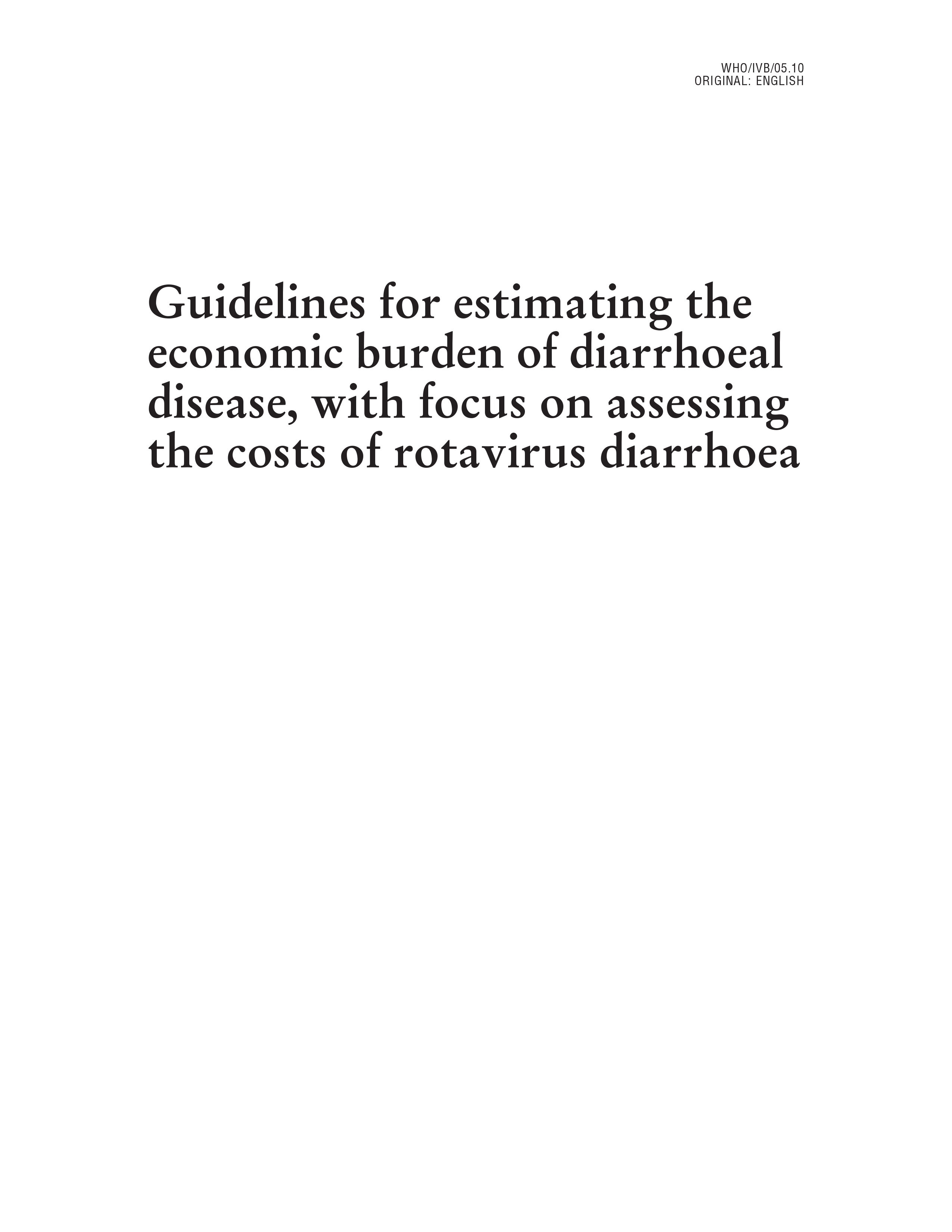The objective of these guidelines is to present a method for determining the costs associated with diarrhoeal disease in children under five years of age. Methods for estimating the costs from the viewpoint of the health sector and for society as a whole are explained. Costs associated with diarrhoea include direct medical costs (medication, diagnostics, personnel and hospital bed-day costs) borne by providers, patients and caregivers, non-medical direct costs (e.g. travel costs) borne by patients/caregivers, and costs of time lost from productive work (indirect costs) borne by patients/caregivers and/or society. These guidelines provide recommendations on how to estimate all these types of costs. An estimate of the overall economic burden of diarrhoeal disease can be used for three major purposes and types of analysis: raising awareness, planning and budgeting, and cost-effectiveness analysis of interventions for the control of diarrhoea. The guidelines are targeted at health economists, public health planners and epidemiologists. In particular, researchers involved in hospital or community-based surveillance of diarrhoeal disease could use the guidelines to add an economic burden component to their study.


